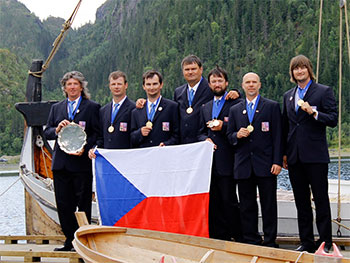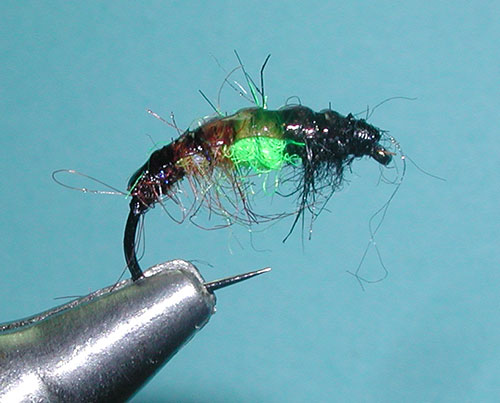Notes:
Czech Nymphs were developed within the Czech Republic in the late 1980's. Competition fly fishing is very popular in Europe and the Czechs achieved many Gold Medals utilizing their Czech Nymphs as well as the Czech nymphing technique used with this fly. The pattern represents caddis larvae and scuds. The first Czech Nymphs were tied from simple household items that the Czechs could gather, plastic foam body from a sponge, horsehair ribbing, and a shellback from salami casings. They were tied on bent grub hooks and were thick but, with time and experience, became thinner to represent caddis larvae and scuds. The history of the Czech Nymph is quite interesting since it was the Poles who first showed the Czechs the pattern in 1984 while fishing the Dunajec River in Poland for a competition between the two countries. The Poles were using 5X tippet bound to the tip of their rods since they had no fly line available and short drifted their flies with great results. Mr Jozef Jelenski of the Polish team showed the Czech competitors two patterns, a Hydropsyche pattern made of hare's fur and a Rhyacophylia pattern with a green body and tail. The Czech's utilized this short line technique with their versions of the scud nymphs and placed second, behind the Poles, in the 1985 World Championships. This was followed with the Czechs winning the 1990, 1994, and 1996 World Championships. At the 1996 World Championships in Wales, the Czech's explained their patterns and technique to the British press and the secret was out.
The pattern was adapted to Sierran fisheries in the late 1990's and the heavily weighted thin profile was very useful in getting nymphs quickly down into fast moving water, working along the bottom. There are over 100 patterns of Czech nymphs, in a range of colors and sizes. They are generally a heavily weighted fly on a bent hook using lead wraps and sparsely dubbed bodies to create a slender, streamline profile. The body is capped by a thin shellback which makes it appear as a case-less caddis larvae and helps to streamline the fly for quick sinking.
|


